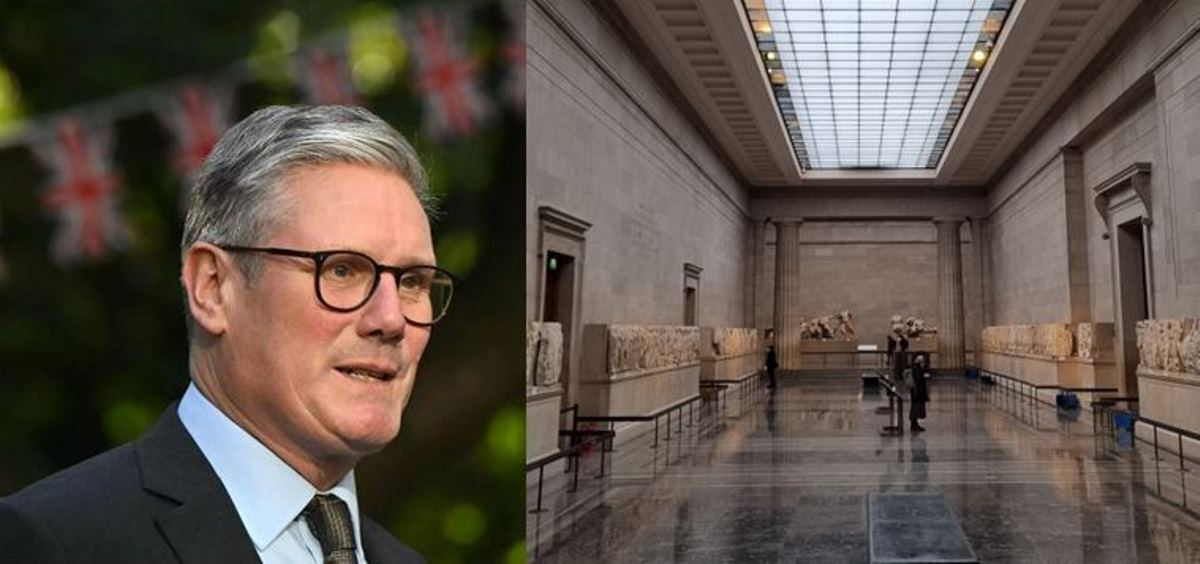10 May 2011
Parthenon Marbles inspire kitsch cladding on Olympic dormitories following "clandestine" nocturnal meeting at British Museum
The Parthenon Marbles, generally referred to as the 'Elgin Marbles' by those proud of Britain's role in the willful desecration of world heritage sites, are to make an appearance during the 2012 Olympic Games in London in the form of kitsch pre-cast concrete cladding on a dormitory block for athletes.
The British Museum, which normally devotes its energies to convincing the world of how the Marbles no longer have any architectural significance, has licensed the sculptures to the architectural firm of Niall McLaughlin Associates for use on an athletes' village block for the 2012 London Olympics.
Architect Niall McLaughlin told The Architectural Review, that his decision to 'quote' the Marbles on the athletes' block came after "researching the history and significance of the screen in architecture through the writings of Gottfried Semper and Karl Bötticher."
In the event, the decision to use the Marbles was prompted by "a clandestine conversation with senior curator Ian Jenkins late one night in the British Museum." Why clandestine?
"The last thing I want is for people to think it is to do with representing the origins of the Olympics," said MacLaughlin. Okay. Got it.
God forbid that the Parthenon Marbles in London might be permitted to refer in any way to their Greek origins. After all, they are now what McLaughlin himself aptly describes as "deracinated". (Deracinated, for those without a dictionary to hand, originates from the late 16th century French term 'déraciner' — to tear up by the roots.)
The most interesting and ironic aspect of this news is the British Museum's willingness to make the Marbles available for digital replication for architectural purposes.
As I pointed out in my paper on the Universal Museum, ever since Lord Elgin instructed his goons to tear up the Parthenon frieze by its roots in the early nineteenth century, a central plank of the British Museum's propaganda has been to efface the architectural history of the Marbles:
"As late as 1928, three leading classical archaeologists, John Beazley, Donald Robertson and Bernard Ashmole, had pronounced the Parthenon Marbles as primarily works of art rather than as architectural elements – 'Their former decorative function as architectural ornaments, and their present educational use as illustrations of mythical and historical events in ancient Greece, are by comparison accidental and trivial interests.'”
(Quoted in Jenkins, Ian, Archaeologists and Aesthetes, British Museum Press, 1992, p225.)
In case you hadn't noticed, that's the same Ian Jenkins who approved the translation of the Marbles into MDF replicas and thereafter into pre-cast concrete panels.

Early photographs of the romantically-named 'Athletes Village Block N15' (Byron eat your heart out) suggests that their use in Stratford will harmonise perfectly with the British Museum's philistine display in Bloomsbury, which jumbles the Panathenaic frieze in such a way as to make it utterly meaningless.
The Parthenon Marbles belong in Athens. Send them back.
Tom Flynn
Eddie O’Hara Chairman of the BCRPM) adds: "I do see that the Greek people may rightly take offence at this exploitation (presumably at some commercial cost) of sculptures which they regard as icons of their cultural heritage and which they regard (with much justification) as illegally removed from the Parthenon.
The British Museum makes the high handed claim that their use of these sculptures to serve their "encyclopaedic" narrative of the development of western art takes priority over the "parochial" narrative of the Parthenon in the New Acropolis Museum. I argue that there is no objective basis for this claim, that if any narrative should take priority it is that of the New Acropolis Museum. Now here we have the BM not merely offering the sculptures for exploitation to serve a quite different narrative, as eloquently explained by the architects. If this narrative belongs to anyone it is to the NAM.
I observe that this action is an insult to the sculptures and an insult to the rightful sensibilities of the Greek people about their cultural heritage."





Comments powered by CComment